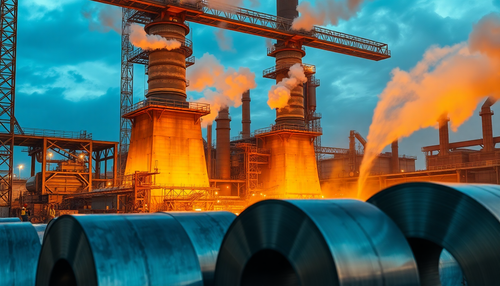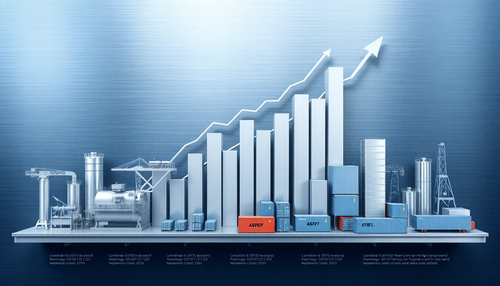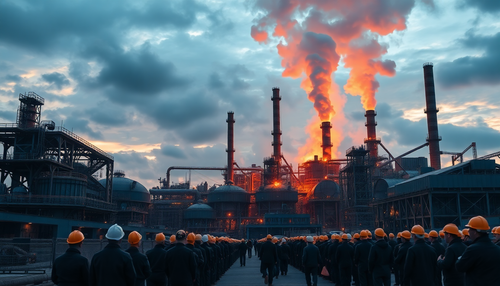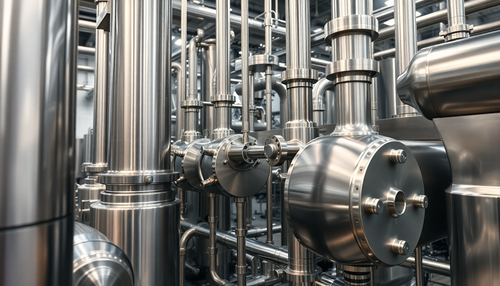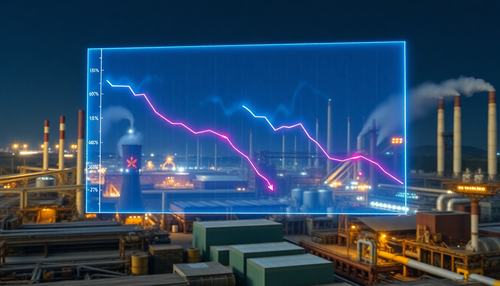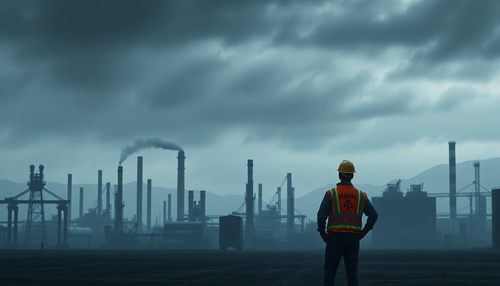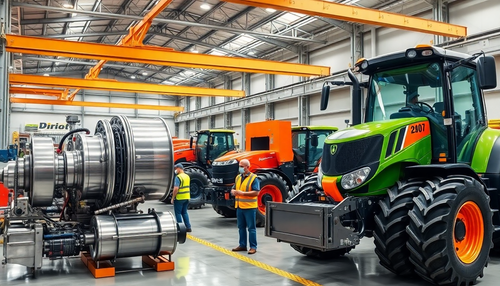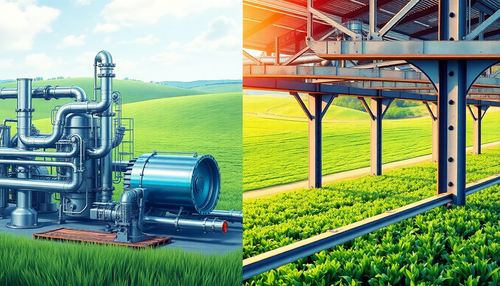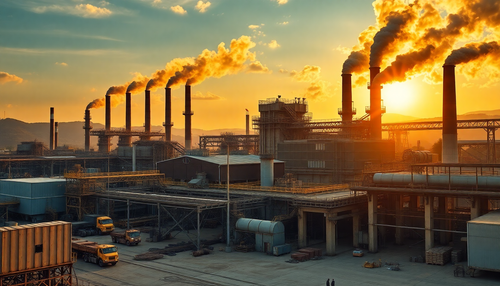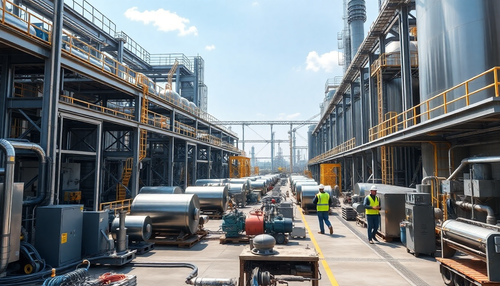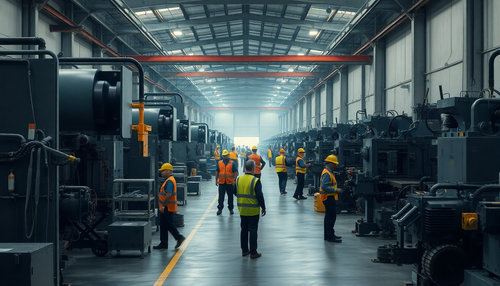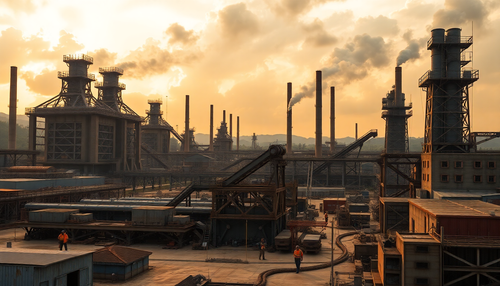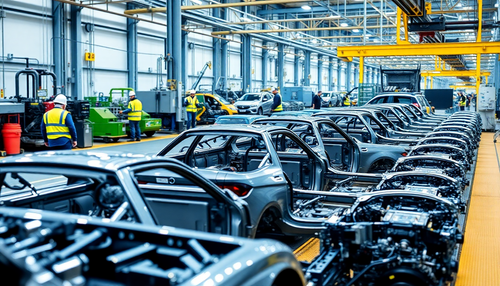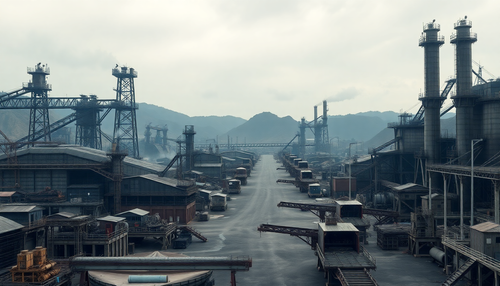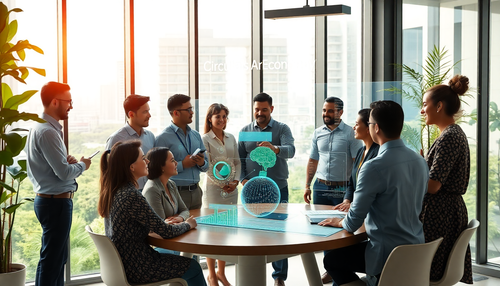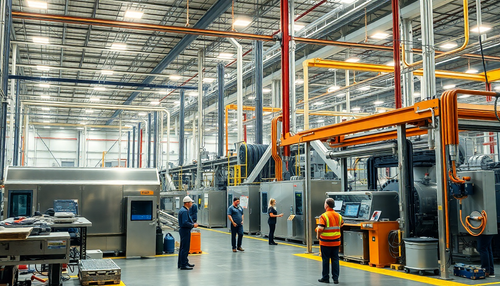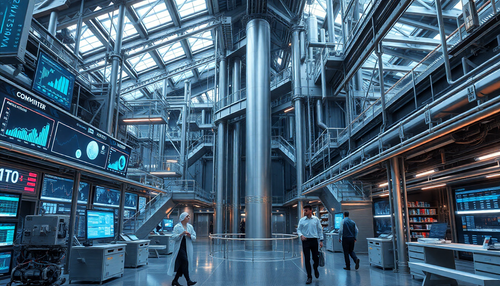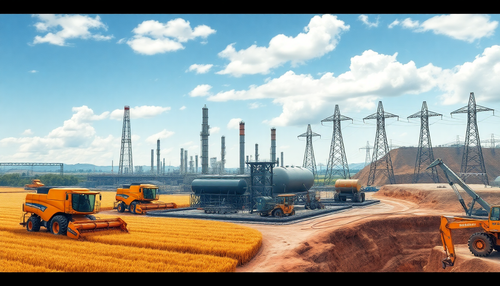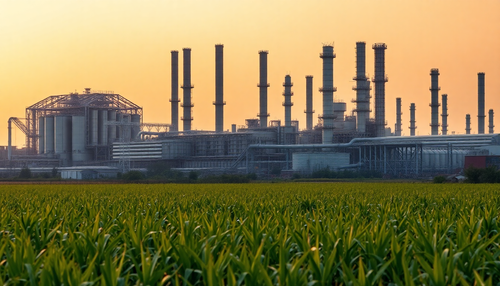Sustainable Construction involves the integration of techniques and technologies that aim to minimize environmental impact, promote energy efficiency and create healthy living spaces. This includes the use of sustainable materials, conservation of natural resources, indoor air quality and bioclimatic design. Let's exemplify some points that can help in implementing the processes.

Definition of Sustainable Construction
Sustainable construction is an integrated and holistic approach to the planning, design, construction and operation of buildings that seeks to meet current needs without compromising the ability of future generations to meet their own needs. It is based on fundamental principles of efficiency, environmental and social responsibility, aiming to reduce the negative impact of construction on the environment, promote the health and well-being of occupants and contribute to equitable socioeconomic development.
This approach involves the integration of strategies and practices that address several aspects, including energy efficiency, rational use of natural resources, selection of low environmental impact materials, indoor air quality, thermal and acoustic comfort, water conservation, waste management and harmonious interaction with the urban and natural surroundings.
Furthermore, sustainable construction seeks a regenerative approach, that is, not only minimizing negative impacts, but also actively contributing to the regeneration and revitalization of ecosystems, communities and local economies. This may involve adopting practices such as local production of materials, the rehabilitation of existing buildings, the use of renewable energy, the creation of green spaces and the promotion of social inclusion and community participation in planning and construction processes.
In short, sustainable construction is not just a technique or set of isolated measures, but rather a comprehensive philosophy that seeks to transform the way buildings are designed, constructed and used, aiming to create a healthier, more resilient and equitable built environment for people. present and future generations.
- Importance for the Environment: Sustainable construction plays a vital role in preserving the environment. By adopting practices and technologies that reduce the consumption of non-renewable natural resources and minimize the emission of pollutants, it contributes to mitigating climate change, protecting biodiversity and conserving ecosystems. Furthermore, it promotes the responsible management of construction and demolition waste, reducing the environmental impact associated with civil construction.
- Importance for the Economy: Sustainable construction offers several economic advantages. On the one hand, energy efficiency and the use of sustainable materials can result in significant reductions in buildings' operating costs, such as energy, water and maintenance consumption. This not only benefits building owners and users, but also increases competitiveness in the real estate market, making properties more valued and attractive to investors. Furthermore, adopting sustainable practices drives innovation and creates green jobs, contributing to sustainable economic growth.
- Importance for Social Well-Being: Sustainable construction also has a significant impact on social well-being. By providing healthy, comfortable and accessible indoor environments, it improves the quality of life and health of building occupants. Furthermore, it promotes social inclusion by considering the needs of local communities and creating safe and sustainable spaces for everyone. By creating environments conducive to living, working and learning, sustainable construction contributes to strengthening communities and sustainable social development.
Principles of Sustainable Construction: Creating Eco-friendly Buildings
Energy Efficiency
Energy efficiency in sustainable construction refers to reducing energy consumption during all phases of a building's life cycle. In the Brazilian context, this involves implementing strategies such as:
- Use of LED lighting technologies, lighting control systems and efficient electrical equipment to reduce electrical energy consumption, contributing to saving energy resources and reducing greenhouse gas emissions.
- Incorporation of solar water heating systems to reduce the demand for electricity or gas, taking advantage of the abundant solar potential in different regions of the country.
- Use of efficient thermal insulation materials to minimize heat loss or heat gain in buildings, especially important in a country with significant climate variations like Brazil, reducing the need for artificial air conditioning.
Use of Sustainable Materials
The use of sustainable materials in construction aims to minimize the environmental impact throughout the building's life cycle. In the Brazilian context, this can be achieved through:
- Selection of renewable, recycled or recyclable construction materials, such as certified wood from sustainable management areas in the Amazon, recycled steel and concrete with recycled aggregates, promoting the preservation of forests and the reduction of the carbon footprint of construction.
- Choice of materials with low pollutant emissions, such as paints without VOCs (volatile organic compounds) and water-based adhesives, contributing to improving the indoor air quality of Brazilian buildings.
- Reduction of material waste through the adoption of efficient construction practices and the reuse of materials whenever possible, aiming to minimize the environmental impacts of civil construction in the country.
Conservation of Natural Resources
The conservation of natural resources in sustainable construction involves the protection and preservation of the country's finite natural resources. That includes:
- Implementation of practices to minimize water consumption, such as installing water-saving devices and capturing and reusing rainwater, especially relevant in regions with water scarcity such as the Brazilian Northeast.
- Protection of sensitive natural habitats during the construction and development process, contributing to the preservation of Brazil's unique biodiversity.
- Adoption of measures to reduce air and soil pollution, such as the implementation of waste management systems and the choice of construction materials with a low environmental impact, aiming to protect the country's sensitive ecosystems.
Indoor Air Quality
Indoor air quality is crucial to ensuring healthy and comfortable indoor environments for building occupants in Brazil. This involves:
- Choosing low-emission construction materials to avoid indoor air contamination, promoting the health and well-being of occupants.
- Design and maintenance of efficient ventilation systems that guarantee good air circulation and the removal of pollutants, especially important in urban environments with high levels of air pollution.
- Humidity control to prevent the growth of mold and bacteria, thus improving indoor air quality and preventing respiratory problems.
Sustainable Materials
Certified Wood:
- Sustainable Origin: Certified wood in Brazil comes from sustainably managed forests, ensuring adequate vegetation renewal.
- Technical Characteristics: Species such as mahogany and teak have mechanical resistance and durability, making them ideal for various applications in construction.
- Environmental Benefits: Its use contributes to the conservation of Brazilian tropical forests, reducing illegal deforestation and promoting biodiversity.
Recycled Concrete:
- Production Process: Recycled concrete is obtained from crushing and processing concrete waste, such as construction and demolition remains.
- Technical Properties: Maintains mechanical characteristics similar to conventional concrete, being suitable for structures and paving.
- Environmental Impact: Contributes to reducing the amount of waste sent to landfills, in addition to saving natural resources, such as sand and gravel.
Thermal and Acoustic Insulation:
- Available Materials: Options such as rock wool, glass wool and recycled cellulose offer excellent thermal and acoustic performance.
- Applications: They are used on walls, floors and roofs to reduce heat transfer and noise, ensuring environmental comfort.
- Energy Efficiency: They contribute to reducing the energy consumption of buildings, keeping the internal temperature stable and minimizing the need for heating and cooling.
Low VOC (Volatile Organic Compounds) Paints:
- Specific Formulation: Developed to minimize the emission of volatile organic compounds (VOCs), which are harmful to human health and the environment.
- Benefits: Provide healthier indoor environments, reducing air pollution and the risk of respiratory problems.
- Compliance with Standards: Meet the quality and safety standards established by Brazilian legislation, guaranteeing the health and well-being of building occupants.
By adopting these sustainable materials in Brazilian construction, professionals in the sector not only contribute to the preservation of the environment and the conservation of natural resources, but they also guarantee the quality and durability of constructions, promoting more sustainable and responsible development.
Energy Efficiency
Adequate Insulation:
- Importance: Adequate insulation is essential to reduce heat transfer between the interior and exterior of buildings, contributing to maintaining comfortable temperatures and reducing the use of heating and cooling systems.
- Materials Used: In Brazil, materials such as expanded polystyrene (EPS), rock wool and polyurethane foam are commonly used for thermal insulation of walls, slabs and roofs.
- Application Techniques: Proper installation of insulation, ensuring the absence of thermal bridges and sealing failures, is essential to maximize its effectiveness and minimize energy losses.
Controlled Ventilation:
- Importance of Air Renewal: Controlled ventilation guarantees indoor air quality by promoting adequate air renewal, removing pollutants and ensuring thermal and respiratory comfort for occupants.
- Systems Used: In Brazil, mechanical ventilation systems with heat exchange are frequently adopted to ensure efficient air renewal without compromising thermal comfort.
- Energy Efficiency: The implementation of controlled ventilation systems with heat recovery makes it possible to take advantage of the thermal energy of the exhaust air to preheat the fresh air that enters the building, thus reducing the demand for heating.
Use of Renewable Energy Sources:
- Solar Energy: Brazil has great potential for generating solar energy due to its high incidence of solar radiation. Photovoltaic systems can be installed on the roofs of buildings to generate clean, renewable electricity.
- Wind Energy: In regions with consistent winds, such as the coast and some inland areas, wind energy can be a viable option to complement the energy matrix of buildings. Wind turbines can be installed on nearby land to generate electricity.
- Government Incentives: The Brazilian government offers tax incentives and specific financing lines for renewable energy projects, facilitating the adoption of these technologies in commercial and residential buildings.
Passive Design:
- Solar Orientation: Harnessing sunlight for natural lighting and passive heating is a fundamental strategy in passive building design. In Brazil, the proper orientation of buildings in relation to the sun can maximize light and heat input in winter and minimize heat gain in summer.
- Shading Elements: The use of elements such as sun shades, pergolas and vegetation to provide shade during the hottest periods of the day helps to reduce the thermal load on buildings, reducing the need for artificial cooling.
- Construction Materials: The selection of materials with high thermal inertia, such as bricks, stones and concrete, helps to stabilize internal temperature variations, providing thermal comfort to occupants.
By implementing these energy efficiency strategies and technologies in buildings in Brazil, it is possible to significantly reduce energy consumption, minimize operational costs and contribute to the environmental sustainability of the construction sector.
Waste Management
Importance of Proper Waste Management:
- Environmental Impact: Civil construction is responsible for a significant portion of urban solid waste, contributing to environmental degradation and the scarcity of natural resources. Proper waste management is essential to minimize this impact and promote the sustainability of the sector.
- Environmental Legislation: In Brazil, the National Solid Waste Policy (PNRS), established by Law No. 12,305/2010, establishes guidelines for the integrated management and management of solid waste, including reduction, reuse, recycling and appropriate final disposal actions.
Waste management in sustainable construction in Brazil aims to minimize waste and promote the recycling and reuse of materials. This involves:
- The implementation of practices for separating and recycling construction waste, as well as reducing the amount of materials discarded in landfills, contributing to the reduction of the environmental impacts of civil construction in the country.
- The establishment of selective collection programs at construction sites and actions to raise awareness among workers about the importance of correctly disposing of waste.
- Promoting partnerships with companies and recycling cooperatives to reuse recyclable materials and generate income for local communities.
These measures are fundamental to promoting sustainable construction in Brazil, contributing to reducing the environmental impacts of the construction industry and promoting more sustainable and equitable development throughout the country.
Waste Reduction:
- Work Planning: A waste management plan must be drawn up before the start of work, identifying the types and quantities of waste generated and establishing measures to reduce it. This includes optimizing the use of materials, minimizing scraps and choosing products with sustainable packaging.
- Construction Techniques: The adoption of efficient construction techniques, such as the use of prefabricated structures and modular construction systems, can reduce the generation of waste during the construction process.
Reuse of Materials:
- Selection of Materials: Construction materials, such as doors, windows, tiles and flooring, can be reused in other works or renovations, reducing the demand for new materials and waste disposal.
- Recovery of Leftovers: Leftover materials, such as concrete, bricks and wood, can be crushed and recycled to produce recycled aggregates, used in new works as a base for paving and filling structures.
Waste Recycling:
- Separation at Source: Waste generated during construction must be separated at source, according to its nature (organic, recyclable, non-recyclable), facilitating the recycling process and appropriate final disposal.
- Collection Points: The installation of selective collection points on construction sites allows for the segregation and proper routing of waste to recyclers and recycling cooperatives.
Responsible Disposal:
- Appropriate Final Disposal: Non-recyclable waste must be sent to licensed landfills, following the environmental standards and regulations established by the competent bodies.
- Reverse Logistics: Manufacturers and suppliers of construction materials are responsible for implementing reverse logistics systems, collecting and properly disposing of post-consumer products, such as packaging and chemicals.
Adequate waste management in Brazilian construction is essential to minimize the environmental impact of the sector, promoting sustainability and contributing to the conservation of natural resources. By adopting waste reduction, reuse, recycling and responsible disposal practices, it is possible to achieve efficient management in line with the principles of the circular economy.
Certifications and Standards for Sustainable Construction in Brazil
LEED (Leadership in Energy and Environmental Design):
- Description: LEED is an international certification and rating system for sustainable buildings, developed by the US Green Building Council (USGBC). It evaluates the environmental performance and sustainability of buildings in several categories, such as energy efficiency, indoor air quality, rational use of water and selection of materials.
- Certification Process: To obtain LEED certification in Brazil, the building must meet a series of requirements and criteria established by the USGBC. This includes the submission of supporting documentation such as architectural designs, material specifications and energy performance reports.
- Associated Benefits: LEED certification provides international recognition for the sustainability of the building, increasing its value in the real estate market. Furthermore, it can result in reductions in operating costs, through savings in resources such as energy and water, and contribute to the well-being of occupants, offering healthy and comfortable indoor environments.
AQUA-HQE (High Environmental Quality - Sustainable High Environmental Quality):
- Description: Developed by Vanzolini, AQUA-HQE is a sustainable construction certification system adapted to the Brazilian reality. It evaluates the environmental performance and quality of life in buildings, considering aspects such as environmental management, thermal, acoustic and visual comfort, and energy efficiency.
- Certification Process: The AQUA-HQE certification process involves the evaluation of specific criteria in each phase of the project, from design to building operation. Independent audits are carried out to verify compliance with established requirements.
- Associated Benefits: AQUA-HQE certification recognizes the commitment to sustainability and quality of life for the building's occupants. Furthermore, it promotes the reduction of the environmental impacts of civil construction, encouraging the adoption of sustainable practices and technologies.
Procel Edifica Seal:
- Description: The Procel Edifica Seal is an initiative of the National Electric Energy Conservation Program (Procel), aimed at promoting energy efficiency in buildings. It certifies buildings that have low electricity consumption in their facilities.
- Certification Process: To obtain the Procel Edifica Seal, the building must undergo a technical assessment that considers the energy performance of its facilities, including lighting, air conditioning, water heating and thermal insulation systems.
- Associated Benefits: The Procel Edifica Seal certifies the energy efficiency of the building, adding value to the enterprise and providing energy savings for its users. It also contributes to reducing environmental impact and combating climate change, by promoting the rational use of energy resources.
- Adaptation to Brazilian technical standards: ABNT (Brazilian Association of Technical Standards), which establish requirements and guidelines for various aspects of sustainable construction.
- The implementation of environmental management systems: ISO 14001, which help companies manage their environmental impacts and ensure compliance with current environmental legislation.
Obtaining certifications and complying with standards related to sustainable construction in Brazil are essential to promote the adoption of environmentally responsible practices and technologies in the construction sector. These initiatives not only increase the value of buildings in the real estate market, but also contribute to the preservation of natural resources and the promotion of the well-being of occupants.
Challenges and Opportunities in Sustainable Construction in Brazil
Challenges:
- High Initial Costs: The integration of sustainable practices in construction often involves higher initial costs due to the use of innovative technologies and materials. This can represent a challenge for companies and construction companies, especially in a context where construction costs are already significant.
- Resistance to Change: The adoption of new sustainable practices may encounter resistance due to lack of familiarity and the traditional culture ingrained in the sector. Overcoming this resistance requires a continued effort to raise awareness and educate about the economic and environmental benefits of sustainability in construction.
- Lack of Adequate Regulations and Incentives: The absence of specific regulations and government incentives can discourage the adoption of sustainable practices. The lack of clear guidelines and incentive policies can make it difficult for companies to make decisions in this regard.
Opportunities:
- Technological Innovation: The search for sustainable solutions drives technological innovation in civil construction. The development of new efficient materials and technologies can not only promote environmental sustainability, but also reduce costs and increase project efficiency.
- Growing Market: Growing environmental awareness has driven the demand for sustainable buildings, creating an expanding market for companies investing in this segment. Offering sustainable developments can provide a significant competitive advantage in the real estate market.
- Legislation and Government Incentives: The implementation of public policies and tax incentives can favor the adoption of sustainable practices in construction. Stricter regulations and incentive programs can encourage investments in energy efficiency and the use of sustainable materials.
- Long-Term Cost Savings: Although initial costs may be higher, sustainable practices often result in significant savings in the long term. Energy efficiency, for example, can lead to substantial reductions in operating costs, offsetting initial investments over time.
Overcoming challenges and exploring opportunities in sustainable construction in Brazil require a joint effort from everyone involved, including companies, government, academia and civil society. Investments in research and development, education and public policies are essential to promote the widespread adoption of sustainable practices and drive sustainable growth in the construction sector.




















































